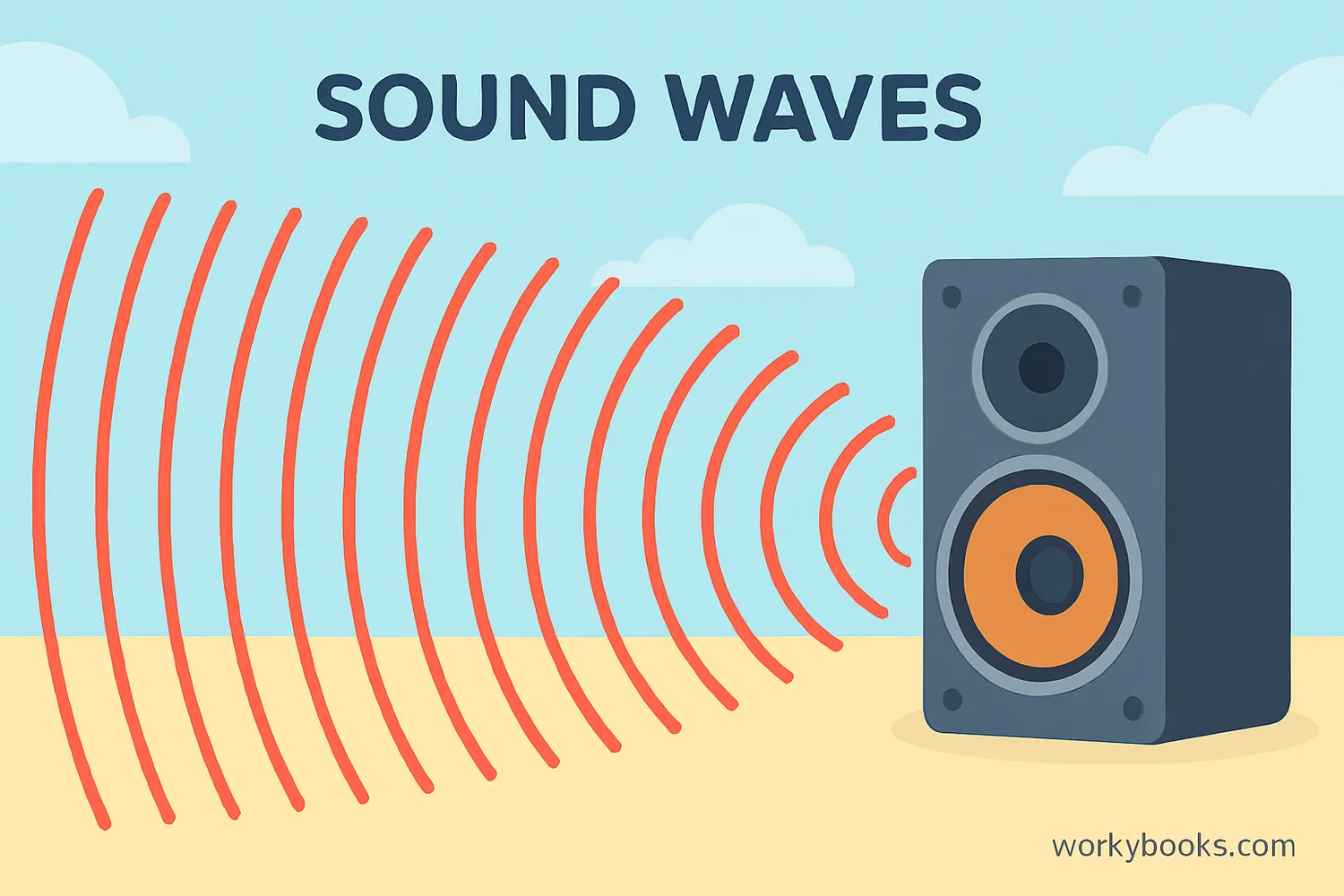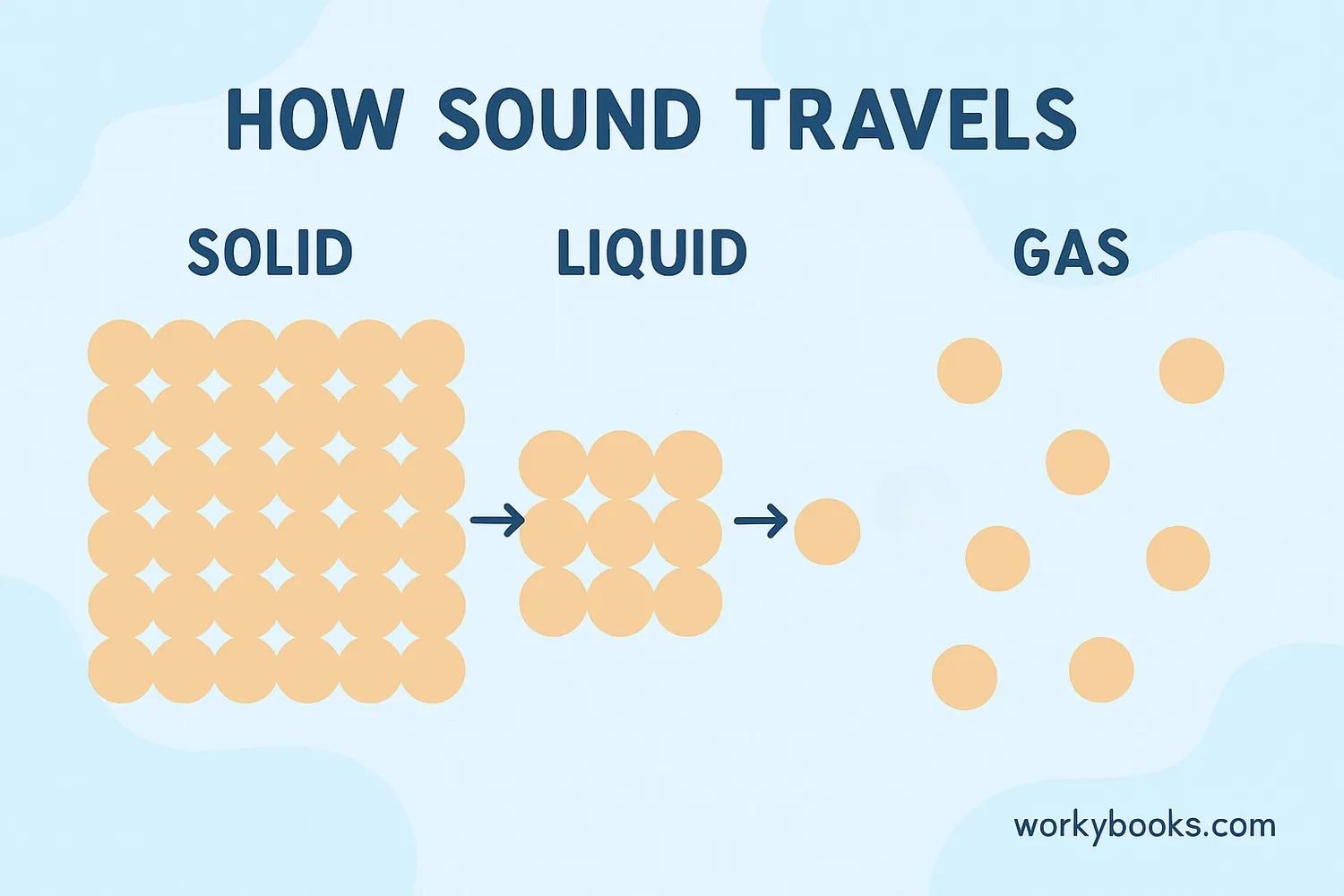Speed of Sound - Definition, Examples, Quiz, FAQ, Trivia
Discover how sound travels through different materials and the science behind sound waves!
What is Speed of Sound?

The speed of sound is how fast sound waves travel through different materials like air, water, or solids. In air at room temperature (20°C or 68°F), sound travels at about 343 meters per second (767 miles per hour)! That's fast, but not as fast as light, which is why we see lightning before we hear thunder.
Sound travels as mechanical waves that need a medium (like air, water, or solids) to move through. In space, where there's no air, sound can't travel at all! That's why astronauts use radios to communicate.
Sound Fact!
Sound travels about 4 times faster in water than in air because water molecules are closer together!
How Sound Travels

Sound travels by creating vibrations that push molecules together (compression) and then apart (rarefaction). These vibrations create waves that move through materials. The speed depends on how close the molecules are to each other:
Solids
Molecules are close together, so sound travels fastest
Liquids
Molecules are farther apart, so sound travels slower
Gases
Molecules are farthest apart, so sound travels slowest
Here are some examples of the speed of sound in different materials:
| Material | Speed (m/s) | Speed (mph) |
|---|---|---|
| Air (20°C) | 343 | 767 |
| Water | 1,480 | 3,315 |
| Steel | 5,960 | 13,330 |
| Glass | 5,640 | 12,615 |
Supersonic Speed!
When something travels faster than the speed of sound, it's called supersonic. This creates a sonic boom - a loud noise caused by shock waves!
Factors Affecting Sound Speed
Several factors affect how fast sound can travel through a material:
Temperature
Warmer temperatures make sound travel faster because molecules move more quickly
Density
Denser materials usually transmit sound faster because molecules are closer together
Elasticity
How well a material returns to its original shape affects sound speed
For every 1°C increase in temperature, the speed of sound in air increases by about 0.6 m/s. That's why sound travels faster on a hot day than on a cold day!
Humidity also affects sound speed. Sound travels slightly faster in humid air than in dry air because water molecules are lighter than nitrogen and oxygen molecules.
Speed of Sound Quiz
Test your knowledge about sound with this quiz! Answer all 5 questions to see how much you've learned.
Frequently Asked Questions
Here are answers to some common questions about the speed of sound:
Sound Trivia
Discover some amazing facts about sound and how it travels!
Thunderous Energy
A typical clap of thunder contains enough energy to power a 100-watt light bulb for more than 3 months! The sound waves from thunder can travel up to 25 kilometers from the lightning strike.
Animal Hearing
Elephants can communicate using infrasound (very low frequency sound) that travels through the ground faster than through air. They can detect these vibrations through their feet and communicate over distances up to 10 kilometers!
Supersonic Records
The fastest aircraft ever built, NASA's X-43A, reached Mach 9.6 - almost 10 times the speed of sound! That's approximately 11,760 km/h (7,310 mph). At that speed, you could travel from New York to London in less than an hour.
First Measurement
The first reasonably accurate measurement of the speed of sound was made in 1635 by French mathematician Marin Mersenne. He calculated the speed to be about 448 m/s, which was fairly close to the modern value of 343 m/s.


